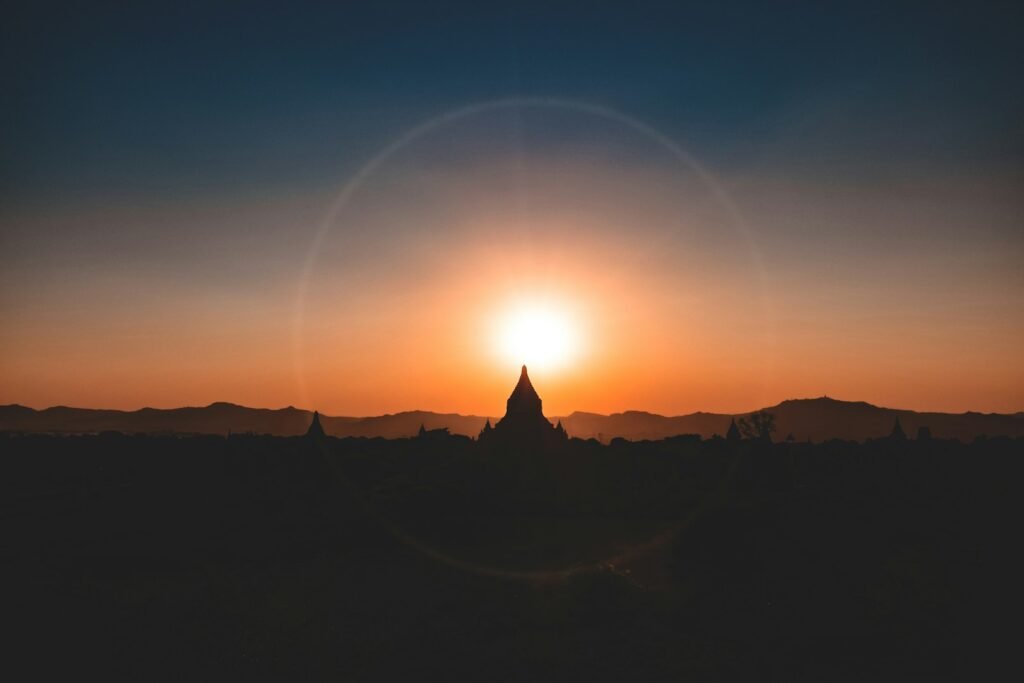Nature has an extraordinary talent for creating spectacles that leave us breathless. Among these wonders, few phenomena capture our imagination quite like fire rainbows. These dazzling displays stretch across our skies with colors so vivid they seem almost otherworldly, creating the illusion of flames dancing through the clouds.
Though their name suggests danger, fire rainbows are neither dangerous nor actual rainbows. They’re one of the most stunning optical phenomena our atmosphere can produce. So let’s dive into the captivating world of these celestial light shows and discover what makes them so remarkably beautiful and scientifically fascinating.
What Fire Rainbows Actually Are
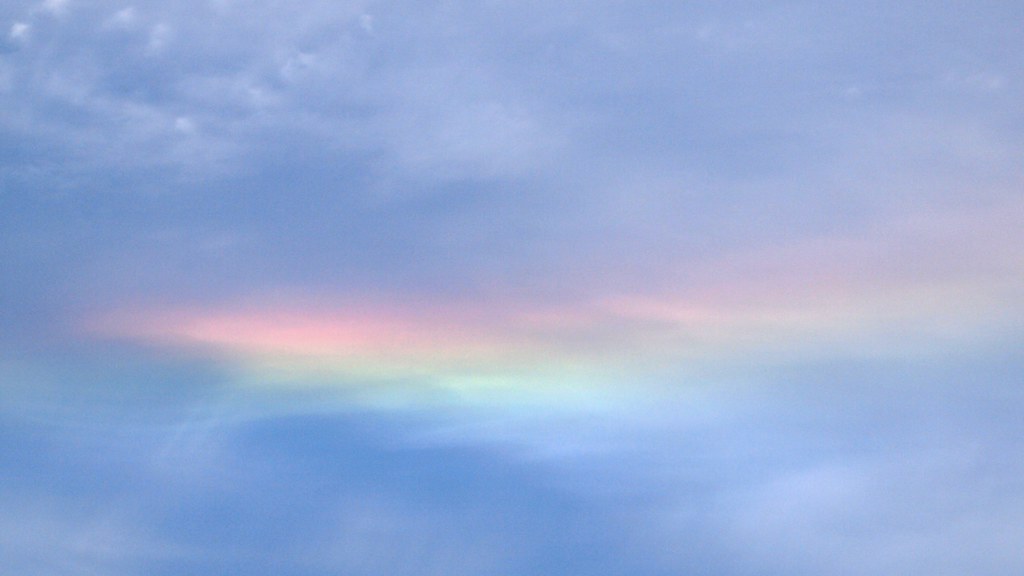
A circumhorizontal arc is an optical phenomenon that belongs to the family of ice halos formed by the refraction of sunlight or moonlight in plate-shaped ice crystals suspended in the atmosphere, typically in actual cirrus or cirrostratus clouds. Despite their popular name, the misleading term “fire rainbow” is sometimes used to describe this phenomenon, although it is neither a rainbow, nor related in any way to fire.
The term, apparently coined in 2006, may originate in the occasional appearance of the arc as “flames” in the sky, when it occurs in fragmentary cirrus clouds. The scientific community prefers the term circumhorizontal arc because it accurately describes the phenomenon’s horizontal appearance and position relative to the sun.
The Perfect Storm of Conditions
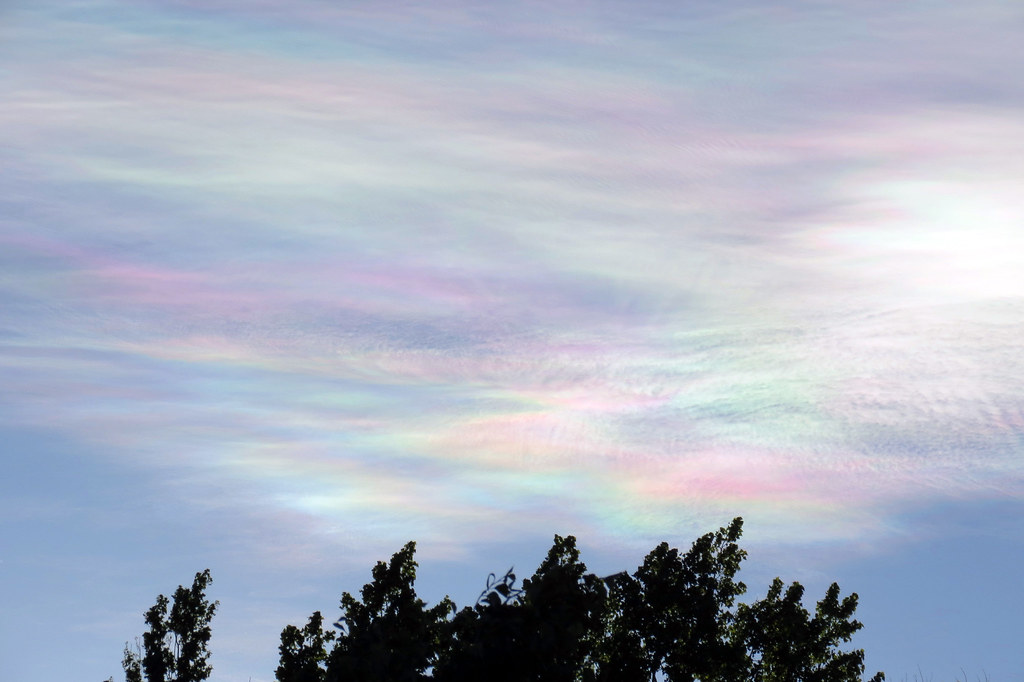
Creating a fire rainbow requires an extraordinary alignment of atmospheric conditions. Apart from the presence of ice-containing clouds in the right position in the sky, the halo requires that the light source (Sun or Moon) be very high in the sky, at an elevation of 58° or greater. This strict requirement immediately limits where and when you can witness these spectacular displays.
Cirrus Clouds: These high-altitude clouds must contain hexagonal, plate-like ice crystals. The structure of these crystals is crucial as they refract and disperse sunlight, creating the vivid colors characteristic of fire rainbows. The ice crystals must also be perfectly aligned, with their flat faces parallel to the ground, acting like millions of tiny prisms suspended in the sky.
The Science Behind the Spectacle
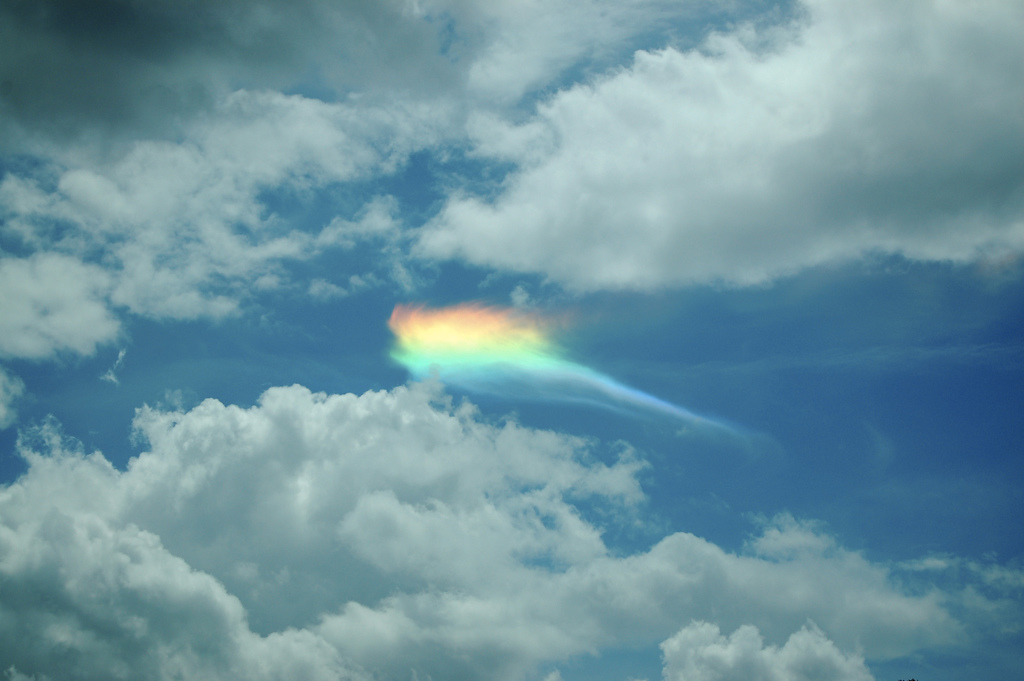
When light enters through the vertical side face of these ice crystals and leaves from the bottom face, it refracts, meaning that its path of progression changes (i.e., it bends). This bending of light is tantamount to light bending through a prism. The magic happens because of the precise ninety-degree angle between where light enters and exits the crystal.
The 90° inclination between the ray entrance and exit faces produce the well-separated spectral colours. When sunlight enters the flat, horizontal ice crystals, it is refracted, or bent, in such a way that it spreads into the colors of the spectrum. This bending process is similar to what happens in a prism, with each color separated based on its wavelength. The result is a brilliant display where red appears at the top and violet at the bottom.
Geographic Lottery: Where You Can See Them
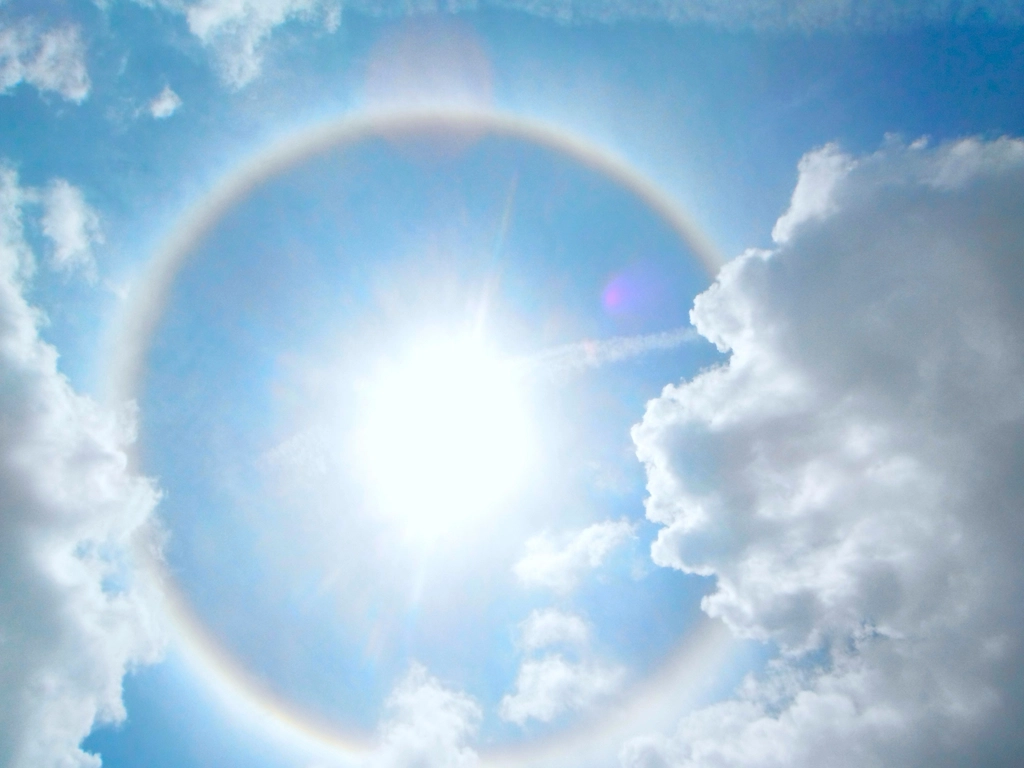
This means that the solar variety of the halo is impossible to see at locations north of 55°N or south of 55°S. If you live in places like northern Canada, Alaska, or most of Scandinavia, you’re essentially out of luck for witnessing solar fire rainbows. The sun simply never gets high enough in these regions to create the necessary conditions.
In the United States it is a relatively common halo, seen several times each summer in any one place. In contrast, it is a rare phenomenon in northern Europe for several reasons. Americans have a significant advantage here. For example, in London, England the sun is only high enough for 140 hours between mid May and late July. Contrast that with Los Angeles with the sun higher than 58 degrees for 670 hours between late March and late September.
Seasonal Windows of Wonder
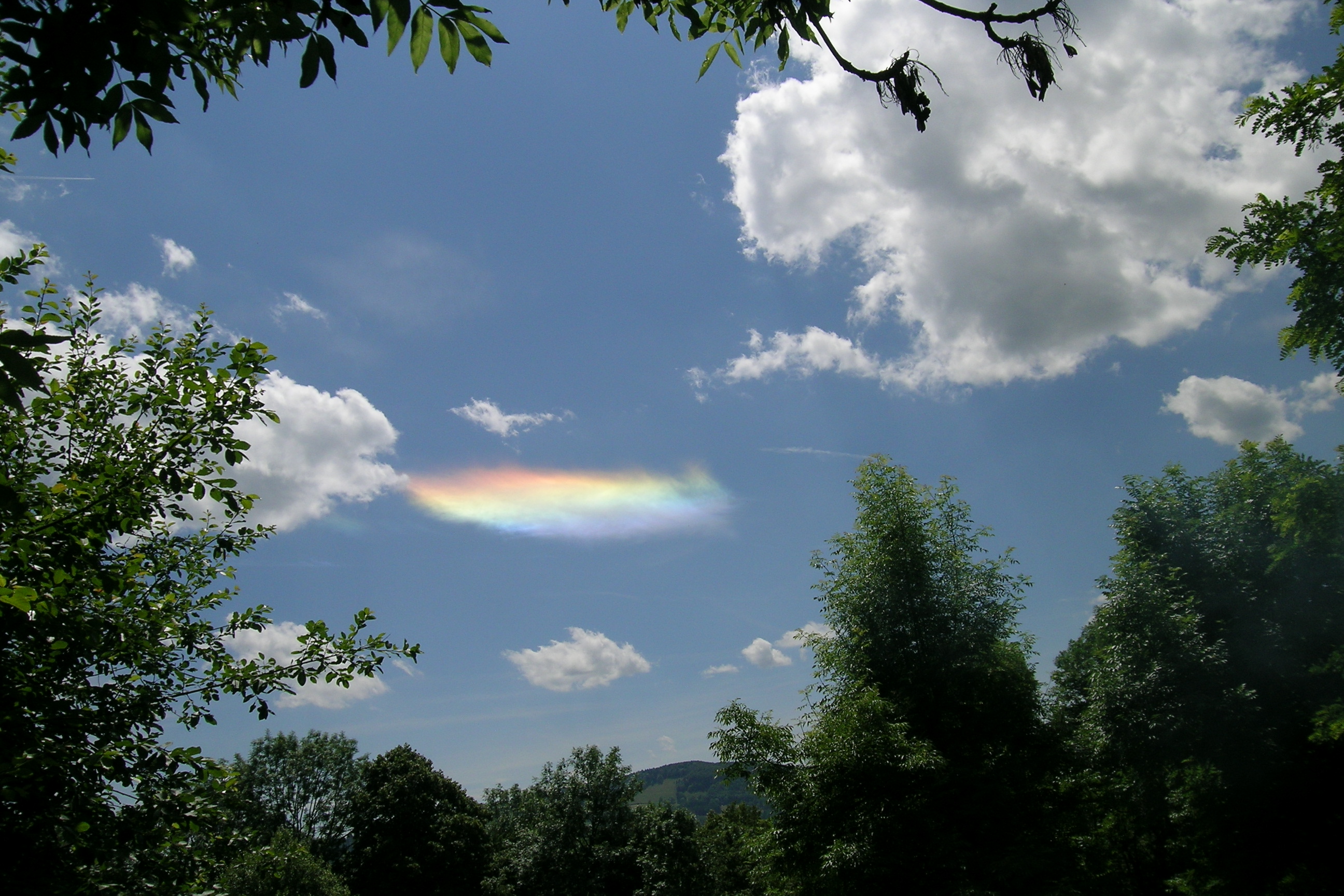
Summer months offer the best chance to see a fire rainbow due to the sun’s higher position in the sky. Time of Day: Look for fire rainbows during midday when the sun is at its peak altitude. The timing isn’t coincidental; it’s purely mathematical. The sun reaches its highest point during summer solstice, creating the optimal window for these phenomena.
At other latitudes the solar circumhorizontal arc is visible, for a greater or lesser time, around the summer solstice. Your latitude determines not just whether you can see fire rainbows, but how long your viewing season lasts. The closer you are to the equator within the viable viewing zone, the longer your opportunities extend throughout the year.
Distinguishing Fire Rainbows from Look-Alikes
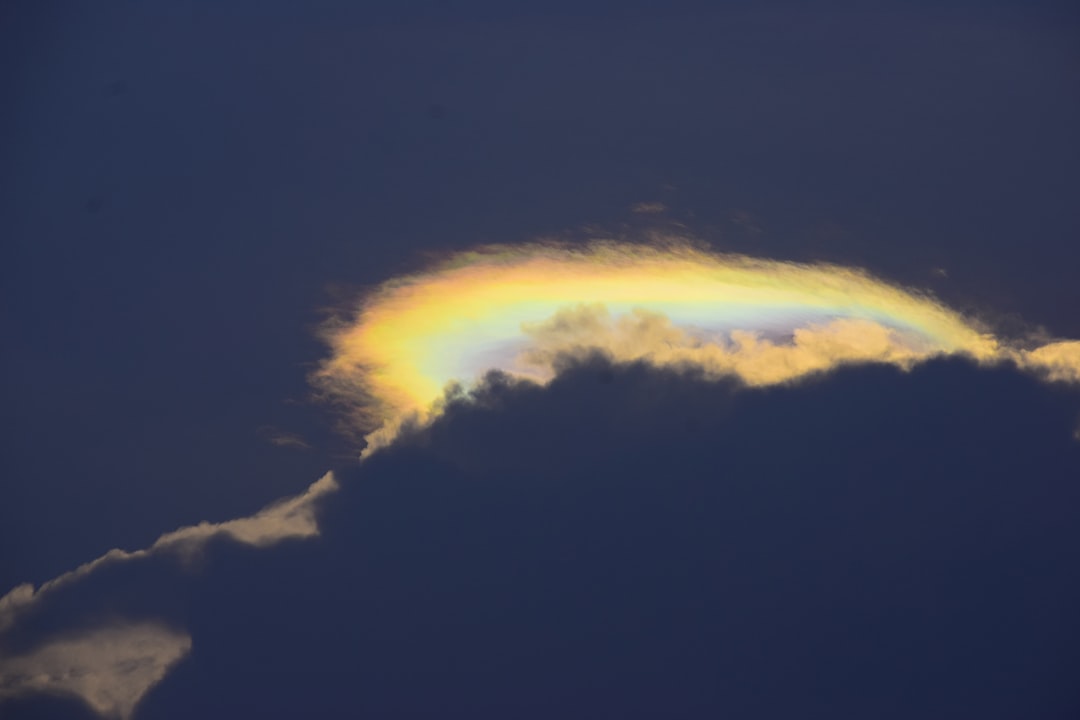
Circumhorizontal arcs, especially when only fragments can be seen, are sometimes confused with cloud iridescence. This phenomenon also causes clouds to appear multi-coloured, but it originates from diffraction (typically by liquid water droplets or ice crystals) rather than refraction. The distinction matters because these are completely different optical processes at work.
Firstly, a circumhorizon arc always has a fixed location in the sky in relation to the Sun or Moon (namely below it at an angle of 46°), while iridescence can occur in different positions (often directly around the Sun or Moon). Secondly, the colour bands in a circumhorizon arc always run horizontally with the red on top, while in iridescence they are much more random in sequence and shape, which roughly follows the contours of the cloud that causes it.
The Rarity Factor
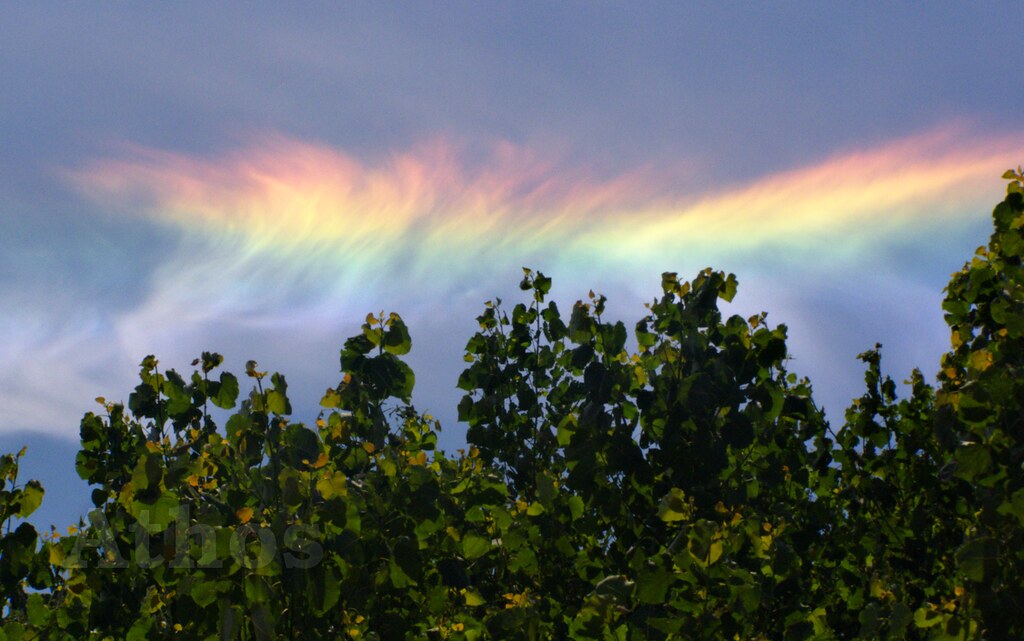
The rarity, or otherwise, of the arc depends on where you are. At medium latitudes like much of the USA it is not rare – it can be seen several times each summer. Yet circumhorizontal arcs are considered rare because they depend on specific atmospheric conditions and solar positions. The perception of rarity often comes from people simply not knowing what to look for or when to look up.
Fire rainbows are rare, but when they do appear, they can span hundreds of miles and last for hours. Often, when the halo-forming cloud is small or patchy, only fragments of the arc are seen. Sometimes you might catch just a glimpse of brilliant colors in a wispy cloud, not realizing you’re witnessing part of this magnificent phenomenon.
Beyond Daytime: Lunar Fire Rainbows
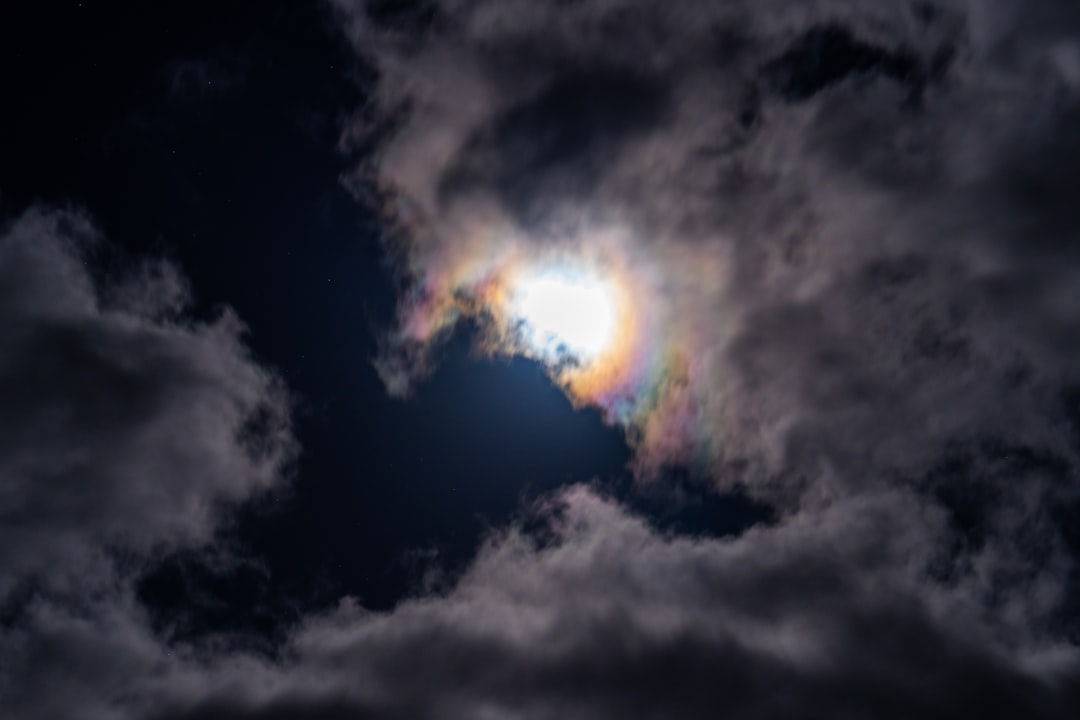
Fire rainbows also occur at night with moonlight. The requirements are the same: the Moon must be high and the ice crystals in the cirrus clouds need to be parallel to the horizon. A lunar circumhorizon arc might be visible at other latitudes, but is much rarer since it requires a nearly full Moon to produce enough light. These nocturnal displays are far more elusive than their solar counterparts.
Although truly rare, fire rainbows at night are easily spotted. The darkness provides a stark contrast that can make even faint lunar fire rainbows more noticeable than dim daytime versions competing with bright sunlight. Imagine the ethereal beauty of moonlit colors dancing across midnight clouds.
Conclusion

Fire rainbows remind us that our atmosphere is a masterful artist, constantly creating breathtaking displays for those who take time to look up. These circumhorizontal arcs represent the perfect marriage of physics and beauty, where precise angles, crystal alignment, and solar positioning combine to paint the sky in brilliant colors. Though they may carry a deceptively dangerous name, their only threat is to our sense of wonder as they stretch our understanding of what’s possible in the world above our heads.
The next time you see wispy cirrus clouds on a bright summer day with the sun high overhead, remember to glance upward. You might just witness one of nature’s most spectacular light shows dancing across the heavens. What do you think about these magnificent atmospheric displays? Have you ever been lucky enough to spot one yourself?




